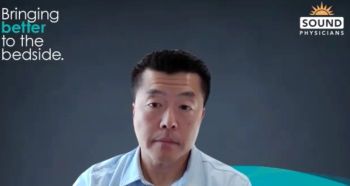
Dr Elise Gould Says Concept of "Skin in the Game" Is Misguided in Healthcare
Although patients are being asked to pay more when it comes to their healthcare, the concept of having more "skin in the game" is misguided when it comes to healthcare, according to Elise Gould, PhD, senior economist and director of health policy research at the Economic Policy Institute.
Although patients are being asked to pay more when it comes to their healthcare, the concept of having more "skin in the game" is misguided when it comes to healthcare, according to Elise Gould, PhD, senior economist and director of health policy research at the Economic Policy Institute.
Transcript (slightly modified for readability)
In what ways are patients being asked to pay more?
Patients are being asked to pay more for healthcare at all different margins when they’re seeking healthcare. Cost margins have increased in terms of higher deductibles, higher coinsurance rates, and higher copays. In all these ways patients are being asked to pay more and more for healthcare.
What is the concept behind increased cost sharing for patients?
The concept of increasing cost sharing, or creating more “skin in the game,” is a way for patients to feel more of the costs. So when they are to consume more healthcare, they have to pay more for it. The idea is that consumers are not feeling the full cost of healthcare and they are, therefore, overconsumin. Or there is what might be called a “moral hazard” problem in economics, where people are consuming more than they would have if they had to pay the full cost.
So that’s the theory behind more “skin in the game,” but unfortunately, having patients pay more for cost sharing has had many unintended consequences.
Why is the concept of “skin in the game” misguided when it comes to healthcare?
So “skin in the game” is a misguided concept for 3 major reasons. One is that not all moral hazard is efficient. Insurance actually relieves liquidity constraints allowing people to get the care they need because they couldn’t afford it without insurance.
Two, cost sharing can lead to medically and economically inefficient decisions. The success of increased cost sharing hinges on the ability of patients to make educated decisions about their healthcare, like when they purchase milk or a car or a cell phone plan. But they don’t have that kind of information when they’re purchasing healthcare.
Third is that cost sharing is a poorly targeted cost containment device. The fact is that it misses the most expensive cost drivers and it may lead to the consumption of less effective care and therefore increase overall healthcare spending.
Newsletter
Stay ahead of policy, cost, and value—subscribe to AJMC for expert insights at the intersection of clinical care and health economics.









































